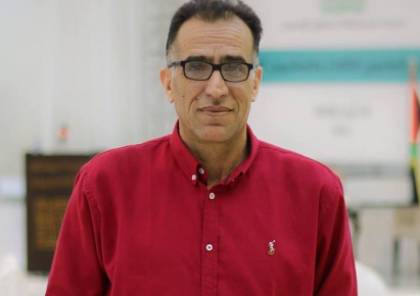Tragedy of displacement from Gaza City
Al-Khamisa News Network - Gaza

By Dr. Hani Al-Aqqad
It appears Israeli leaders regretted leaving Gaza standing without destroying, crushing and wiping it out as they did in Khan Younis and Rafah. They returned because they were not satisfied with revenge and could not find peace. People had come back to rebuild what was destroyed and to live among the rubble and ruins, yet their planes, tanks and rockets resumed bombing the city in a relentless war that spares neither person, tree nor stone. More than a million people now face a real campaign of extermination in Gaza City. Some rush to leave the city because they have another place in the south where Israel ordered them to relocate; others do not know where to go or where to move their families. Staying in Gaza City increasingly means confronting death, and the chance of surviving while remaining there falls as the Israeli military escalates its brutality and fury. Its attacks on homes intensify by the minute: smoke rises from multiple parts of the city and flames shoot toward the sky as rockets strike. Tons of debris fly through the air, falling on people sheltering in tents beside buildings and towers that have become targets for the military’s aircraft — indiscriminate, frenzied shelling that shows no regard for life.
The military warns residents to evacuate towers and high-rise buildings, often giving them only minutes. Time here is not measured in minutes but in seconds, and everyone scrambles to gather what they can: children collect their toys and belongings, mothers pack cooking utensils and bread for life in the tents, fathers grab official papers and family documents. People run to windows and balconies and start throwing down what they have collected, trying to save seconds and rush it to the street below to move it away from a building the military has ordered evacuated and intends to destroy within minutes. They hope to salvage something of their possessions. There is no time to carry everything down stairs, especially with elevators out of service because there is no electricity. They know they cannot take all their belongings or bedding — only the essentials — and what is left behind far exceeds what can be rescued. Then comes the imperative to move away from the building. Panic, terror and cries fill the air. The scene outside is terrifying: everyone runs, furniture tumbles from above, clothes and mattresses fly, some throw doors down to use as firewood if they can later transport them, others toss cupboards for the same purpose. These are the minutes before destruction, before a building is reduced to a pile of rubble — minutes few people outside the scene can imagine, but those who have lived it can picture the horror. It is a race against time, a mix of fear of death and fear of losing everything in the home. Bodies tremble and the spirit resists leaving. It is part of this cursed war, one of a million similar scenes for Gaza’s residents: terrifying details of evacuating a multi-storey building that the military intends to strike with aircraft and U.S.-made air-to-ground missiles.
In a few moments the allotted minutes to remain in place, as set by the military officer, pass. Everyone flees to streets farther away, and after seconds they hear the terrifying explosions and watch their building collapse as if it were layers of biscuits in the hand of an angry child. Their eyes follow the warplanes as they drop their ordnance. Dust and smoke mingle like a crazed volcanic plume. Within minutes some return to see what has become of their building and find only a mound of rubble, among which a few of their possessions remain scattered — few can identify their belongings because the debris has destroyed them. These are momentary scenes akin to an apocalypse that no one can imagine. “A short while ago we had a home here and were sitting waiting for lunch at the table, but the military deprived us of food and of everything,” says every person who came out of the building. Here begins a new ordeal: the search for a tent to spend the night or a means of transport to move elsewhere, whether to the south or to Gaza’s shoreline, where thousands still insist on staying because they fear that if they leave the city they may never return.
In another scene, Gaza’s residents bid farewell to their houses, alleys and streets and take photos everywhere — of homes, streets and lanes — because they do not believe they will remain standing under this savage campaign targeting the city’s civilian infrastructure. They say goodbye to their houses, doors and walls, the corners of their rooms and what is left of their furniture, to their gardens, trees and flowers. Some kiss the ground, others embrace the walls, and some take their front doors with them as a keepsake — or to use later as firewood. It is a tragic scene neither cinema nor history has pictured, and it unfolds only in Gaza: people saying farewell to their homes as if they will never be whole again. The Israeli military comes with tanks and bulldozers to the city to demolish and level its buildings, raze its streets and neighborhoods and destroy everything in them. It comes armed with all its weaponry to fight infrastructure — buildings, residential towers, markets, schools, hospitals, streets and roads — blowing them up with remote-controlled explosive robots and aircraft missiles. An army has come to kill whoever remains in the city; it cares only for killing and intends to leave no one, even those who are disabled or elderly and unable to leave as others did.
Another scene shows thousands of people displaced in the streets, leaving their homes and possessions in one of the harshest scenes imaginable in any war: children and women carrying a few essentials, walking with heavy steps, each move forward measured in barely a foot — not only from exhaustion, but because grief fills the hearts of those who walk, leaving behind a spirit unwilling to separate from the body. The spirit resists displacement while the body moves, trembling with sorrow, pain and fear of the horrors of this brutal war.
Another scene is not along the coastal road between Gaza and the southern area, nor on Al-Rashid Street choked with displaced vehicles as far as the eye can see; it is instead at sea, in the blue water that the waves seem ashamed to disturb. A small rowboat carries a Gazan and his belongings as he flees death. He found no means to reach the south as a displaced person other than this tiny boat. In the photo, his children and wife sit with the belongings they managed to bring and a water tank in the middle of the boat. The sea distance from Gaza to the al-Mawasi area of Khan Younis is about 30 kilometres. The boat is not motorized and its owner is the only person on board — he rows and steers. Consider how long it will take him to reach al-Mawasi in Khan Younis, spending the night at sea not far from the shore amid crashing waves while Israeli navy gunboats’ bullets fly over his family’s heads. Here, death and life are indistinguishable.
Every displacement is a death, and leaving one’s home is a dreadful act that neither logic, nature nor a madman would accept. How can the world witness all this loss and remain motionless, allowing Israel to erase an entire city, demolish its towers, destroy its streets and force people to flee while threatening to kill those who stay? Some have been displaced ten times or more, and each time life and death become the same. In displacement we lose lives from among our lives, bodies from our bodies, and family members who become martyrs rising on the path from one death to the next. The heart and spirit remain in the place, refusing to leave while the body moves on, trembling, the mind replaying images of the home and imagining what will happen if it is hit — and usually it is hit and reduced to rubble. This is the life of displacement for those who know it: a life closer to death yet not quite death, marked by hunger, deprivation, oppression and anguish. It is the bitter tragedy of displacement and the story of every citizen in Gaza in different details. The headline is the same and the details are horrifying in every scene.






